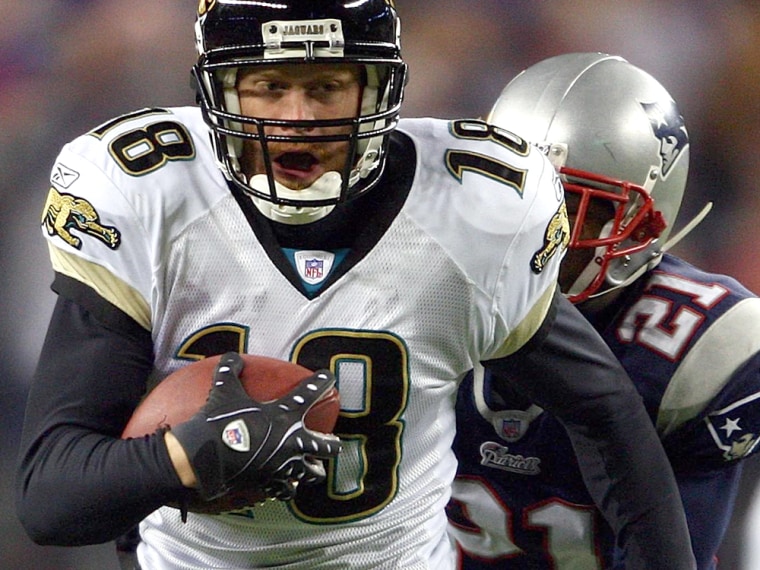Though it does not draw the scrutiny of draft day, training camps or other offseason events, the NFL Scouting Combine — which started last week and ends Tuesday in Indianapolis — is increasingly becoming the site where, even though no money changes hands, a rookies’ payday is determined.
Welcome to the National Football League’s version of a job fair.
A stunning college career can vanish in the minds of scouts who see a tackle who’s added 20 pounds since the Senior Bowl and whose agility is now suspect. NFL personnel decide a certain top 10 pick is no longer worth more than a late second-round choice, while a so-so safety all of a sudden becomes a must-have on day one of the draft.
When former Ohio State star Maurice Clarett showed up at the NFL Scouting Combine in 2005, the talented tailback was expected to impress. After shunning workouts at the previous year’s gathering in Indianapolis, Clarett trained hard in the interim and was poised to become the No. 1 pick once predicted as his destiny.
Instead, his 40-yard dash times were almost laughable. General managers quickly lost interest in the player who had sued to join the NFL after his freshman season. Gambling, the Denver Broncos chose him in the third round that April and signed him for a paltry $230,000 contract with a signing bonus just above $400,000 — millions less than a first-round choice would get. They lost the gamble; Clarett never ran a regular-season play with the team.
That same year, Matt Jones appeared at the combine without fanfare. A likely second-day draft pick from Arkansas, jaws soon dropped at the RCA Dome. Jones’ 4.37 40-yard dash wowed onlookers, as did his 39.5-inch vertical leap (two inches shorter than the best-ever at the combine, by Quincy Black in 2007). GMs realized the 6-foot-6-inch college quarterback could be transformed into a receiver in the pros. The upshot? Jacksonville picked him in the first round — and Jones inked a contract worth about $8.5 million over five years, with $6 million guaranteed.
With their future earnings at stake, it’s amazing how players are judged. No pads or 60-minute games here. Who will shine in the 20-yard shuttle? Can an injured player survive the Cybex Test, where joints are evaluated? Will scouts grimace at a lineman’s body mass index?
Of course, the best-known measuring stick at this six-day affair has nothing to do with brawn. All 330 or so potential NFL players take a 50-question Wonderlic IQ test, which is like a Cliff’s Notes version of the SAT. To imagine these giants gazing at multiple-choice questions such as “What is the ninth month of the year?” is what makes the NFL Combine almost surreal. Of course, executives also interview prospects, perhaps the most normal function that occurs at this job fair. And, in the wake of the Michael Vick scandal, one wonders: Will players be asked if they harbor a love for dog fighting?
But it will all be worth it for some. Greg Olsen’s 4.51 40-yard dash, unusually quick for a tight end, got him noticed at last year’s combine. And when the Bears chose the University of Miami graduate 31st in the 2007 NFL Draft, they believed they had found their first superstar tight end since Mike Ditka in the 1960s, partially based on his mid-winter display of speed. Olsen inked a five-year deal whose value could exceed $10 million.
This year, a number of players will be closely watched. Boston College’s Matt Ryan and Darren McFadden of Arkansas will try to prove they’re worth a top-five pick. Oregon quarterback Dennis Dixon, who seemed poised to lead the Ducks to a national championship until he suffered a torn anterior cruciate ligament, will be assessed on his recovery. Scouts will scrutinize those who have left school as juniors, which gives them 12 fewer game tapes to examine.
The NFL Scouting Combine is a bonanza for Indianapolis, which isn’t exactly a tourist destination in February. Home to the combine since 1988, it draws more than 1,000 players, NFL personnel, media members and the like to fill its hotels restaurants. NFL Network can tout original programming — the cable channel is slated to air 26 hours of “action” from the RCA Dome.
It’s unlikely Maurice Clarett will watch any of it. In prison now for aggravated robbery and carrying a concealed weapon, he can only wonder how the $30 million in guaranteed money a No. 1 overall pick can earn slipped away. He just needs to recall two poor NFL Scouting Combines, where millions of dollars can be dashed in the space of 40 yards.
